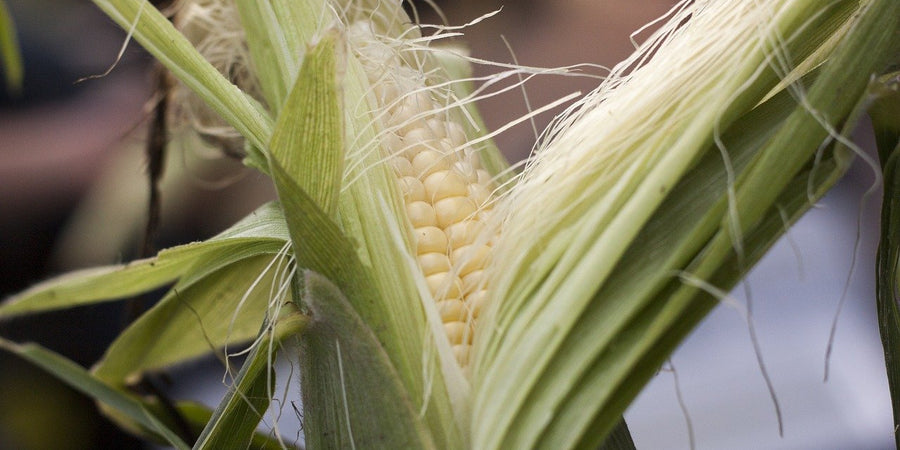How To Grow Sweetcorn

Sweetcorn occurs as a spontaneous mutation in field corn and was grown by several Native American tribes. The Iroquois gave the first recorded sweet corn (called 'Papoon') to European settlers in 1779. It soon became a popular food in the southern and central regions of the United States.
There are several different types of Sweetcorn ranging from the ‘Corn on the cob’ types, to Mini corns that are a staple of stir-fried dishes, and for those that want a hit of Sweetcorn throughout the year they can also be grown as Sprouting shoots.
Here's Our Guide to Growing Sweetcorn:
How, Where & When to Grow Sweetcorn
To get the best results sow indoors at 18-21C from mid-April to mid-May in either modules or deep pots at a depth of 3cm. This approach will overcome the potential issue of mice eating the sown kernels. Or alternatively sow directly into the soil in mid-May, when soil temperature is above 10C, dropping two seeds in a hole 3 cm deep and 45cm intervals: if both seeds germinate, remove the weaker one. Cover with a cloche. To extend the growing season sow twice more, 3 weeks apart.
Sweetcorn is a tall growing crop and as such needs a sheltered and sunny site that has had large quantities of organic matter added to the soil in advance. Sweetcorn is wind pollinated, as such plants should be grown in blocks as opposed to rows.
An alternative way to grow sweetcorn is a growing method known as the '3 sisters'. An introduction to the 3 sisters, these are climbing beans, pumpkins/squash and sweetcorn which when grown together form an interconnected plant guild. The beans add nitrogen to the soil for the pumpkins/ squash and anchor the sweetcorn, protecting it from winds. The corn acts as a living trellis for the beans to climb, the pumpkins or squash keep the other plants roots cool and moist acting as a living mulch. You don't need a lot of space and it is brilliant to do with kids who learn a lot from it.
Regular Care
If plants are in a exposed site then they will need to be staked. Water well when the plants are in flower. If the leaves are yellowish and/or the plant doesn’t appear to be growing very quickly, then a high nitrogen liquid feed will be required.
Harvesting Sweetcorn
When the tassels have gone brown is the time to check for ripeness. Peel back the husk and squeeze a kernel, if white liquid emerges then the cob is ready to be picked. Simply twist the ripe cobs and pull away from the stem. Sweetcorn lose their flavour rapidly once harvested, so only pick when required.

Nutrition
At 86 calories per 100 g, sugar corn kernels are moderately high in calories in comparison to other vegetables. However, fresh sweet corn has much fewer calories than that of in the field corn and other cereal grains like wheat, rice, etc. Their calorie chiefly comes from simpler carbohydrates like glucose, sucrose than complex sugars like amylose and amylopectin. It is one of the finest sources of dietary fibres. Corn is a good source of the phenolic flavonoid antioxidant, ferulic acid. It also contains good levels of some of the valuable B-complex group of vitamins such as thiamin, niacin, pantothenic acid, folates, riboflavin, and pyridoxine. Further, it contains healthy amounts of some essential minerals like zinc, magnesium, copper, iron, and manganese.
Culinary
Yep we all love them grilled on the bbq…but they can offer so much more…A great addition to a salsa…a heart warming Corn chowder with garlic croutons in winter…or be really creative and make your own Corn relish for hot dogs, burgers and salad.
Growing Guides
If you're thinking of sowing other vegetable and herb seeds, discover more of our growing guides.




